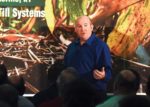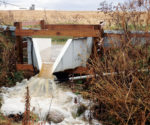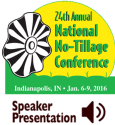Advertise Follow Us
Items Tagged with 'lake erie'
ARTICLES
Why Roots — Not Iron — are Key to a More Prosperous No-Till Future
Nuffield scholar and Merlin, Ontario no-tiller Blake Vince discusses valuable lessons learned abroad and at home about putting healthy soils and water first.
Read More
[Podcast] Why Phosphorus is Leaving the Farm and What to Do About it
In this episode of the No-Till Farmer podcast series, brought to you by Montag Mfg., we welcome owner of Nester Ag Joe Nester to talk about why he thinks we're seeing more problems with phosphorus runoff and what growers can do to keep the nutrient from leaving their fields.
Read More
6 Tips for Keeping ‘P’ in Fields and Out of Local Water Sources
While researchers find more phosphorus is leaving fields via tile, here’s what no-tillers can do to keep their fertility in their fields.
Read More
Scientists: Glyphosate Contributes to Phosphorus Runoff in Lake Erie
Low soil pH and certain metals are causing glyphosate to release phosphorus from the soil, which is responsible for about 25% of dissolved reactive phosphorus runoff in the Maumee watershed.
Read More
Ohio Limits Fertilizer, Manure Spreading to Curb ‘P’ Runoff
No-tillers in watersheds along Lake Erie’s western basin face limits on surface applications of manure and fertilizer, but the key change may simply be keeping good records.
Read More
PRODUCTS
Taking No-Till Further with Water Management, Positive Nutrient Practices - Mike Werling - NNTC 2016 Presentation - MP3 Download
$19.95
Mike Werling has been conservation farming for more than 30 years. In this time, the Decatur, Ind., farmer has adopted never-till, cover crops, waterways, water sediment and control basins, a two-stage ditch and drainage water management structures to further advance his conservation efforts. Werling shares his conservation journey and the practices that have markedly improved his soil tilth. In this presentation, he also provides information on studies and test plots he’s been involved with and share examples of practical application. Werling, who operates in the Maumee Watershed, explains his nutrient management practices and the positive effects they may have on Lake Erie’s water quality.
View
.png?height=125&t=1731942302&width=150)







